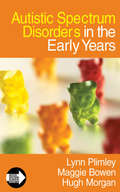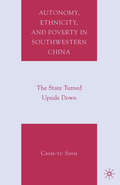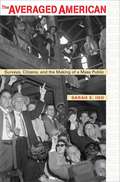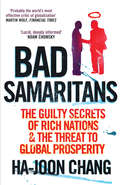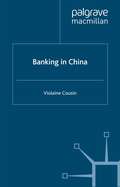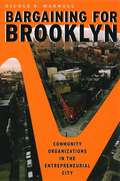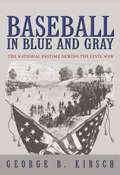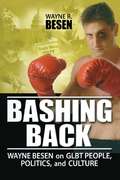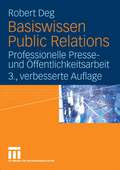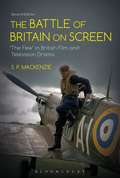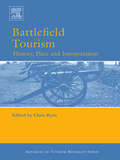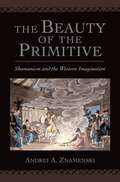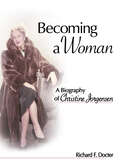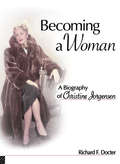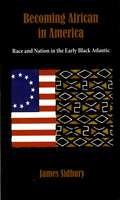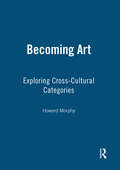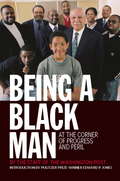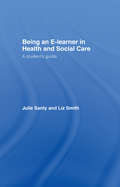- Table View
- List View
Autistic Spectrum Disorders in the Early Years
by Lynn Plimley Maggie Bowen Hugh Morgan'An extremely helpful, compact guide for anyone working in early years education. . . provides clear information for all professionals who work with children from birth to five with autistic spectrum disorders. . . A short, accessible and reader-friendly book that addresses the key issues' - "Nursery Education " Looking at the early years of a child's life, this book provides information on the services that are available for those from birth to five years, and addresses issues related to identification, assessment, teaching and learning and family support. It is illustrated with case studies provided by parents and practitioners. The following areas are discussed: o the Code of Practice for SEN & the SEN and Disability Discrimination Act o identification and assessment o good practice examples of multi-agency collaboration and provision o partnership with parents o social skills and behaviour o alternative intervention and home-based programmes o the transition from pre-school to school. Professionals in Health, Social Services and Education, pre-school playgroups, nursery staff, parents and carers will all find this book useful. Conference Information The Good Autism Practice (GAP) conference is based on the successful foundations of the Good Autism Practice (GAP) journal, which provides a platform for acknowledging and sharing good practice in autism.
Autonomy, Ethnicity, and Poverty in Southwestern China: The State Turned Upside Down
by C. ShihThe Chinese state reaches out to ethnic communities in three different channels of autonomy, ethnicity, and poverty. However, each of these channels designates a submissive position to ethnic citizenship. Amidst theoretical uncertainty on how the state has affected local communities, ethnic minorities can develop subjectivity. Through this, they can sincerely participate in the state's policy agenda, conveniently incorporate the state into the ethnic identity, give feedback to the state within the framework of official discourse, or hide behind the state to evade ethnic identification. Rather than finding a life outside the state, the ethnic communities can, in one way or another, position themselves inside the state.
The Averaged American: Surveys, Citizens, and the Making of a Mass Public
by Sarah E. Igosupports the death penalty, that half of all marriages end in divorce, and that four out of five prefer a particular brand of toothpaste. But remarkably, such data--now woven into our social fabric--became common currency only in the last century. With a bold and sophisticated analysis, Sarah Igo demonstrates the power of scientific surveys to shape Americans' sense of themselves as individuals, members of communities, and citizens of a nation.
Bad Samaritans: The Guilty Secrets of Rich Nations and the Threat to Global Prosperity (Playaway Adult Nonfiction Ser.)
by Ha-Joon ChangIt's rare that a book appears with a fresh perspective on world affairs, but renowned economist Ha-Joon Chang has some startlingly original things to say about the future of globalization. In theory, he argues, the world's wealthiest countries and supra-national institutions like the IMF, World Bank and WTO want to see all nations developing into modern industrial societies. In practice, though, those at the top are 'kicking away the ladder' to wealth that they themselves climbed. Why? Self-interest certainly plays a part. But, more often, rich and powerful governments and institutions are actually being 'Bad Samaritans': their intentions are worthy but their simplistic free-market ideology and poor understanding of history leads them to inflict policy errors on others. Chang demonstrates this by contrasting the route to success of economically vibrant countries with the very different route now being dictated to the world's poorer nations. In the course of this, he shows just how muddled the thinking is in such key areas as trade and foreign investment. He shows that the case for privatisation and against state involvement is far from proven. And he explores the ways in which attitudes to national cultures and political ideologies are obscuring clear thinking and creating bad policy. Finally, he argues the case for new strategies for a more prosperous world that may appall the 'Bad Samaritans'.
Banking in China (Palgrave Macmillan Studies in Banking and Financial Institutions)
by V. CousinChina's banking system is central to their development. This text offers detailed analysis of the Chinese banking sector, its challenges, reasons for the present form, and the implications for reform. The book interrogates the industry's critical issues, such as financial intermediation, capital and credit risk management, and corporate governance.
Bargaining for Brooklyn: Community Organizations in the Entrepreneurial City
by Nicole P. MarwellWhen middle-class residents fled American cities in the 1960s and 1970s, government services and investment capital left too. Countless urban neighborhoods thus entered phases of precipitous decline, prompting the creation of community-based organizations that sought to bring direly needed resources back to the inner city. Today there are tens of thousands of these CBOs—private nonprofit groups that work diligently within tight budgets to give assistance and opportunity to our most vulnerable citizens by providing services such as housing, child care, and legal aid. Through ethnographic fieldwork at eight CBOs in the Brooklyn neighborhoods of Williamsburg and Bushwick, Nicole P. Marwell discovered that the complex and contentious relationships these groups form with larger economic and political institutions outside the neighborhood have a huge and unexamined impact on the lives of the poor. Most studies of urban poverty focus on individuals or families, but Bargaining for Brooklyn widens the lens, examining the organizations whose actions and decisions collectively drive urban life.
Bargaining for Brooklyn: Community Organizations in the Entrepreneurial City
by Nicole P. MarwellWhen middle-class residents fled American cities in the 1960s and 1970s, government services and investment capital left too. Countless urban neighborhoods thus entered phases of precipitous decline, prompting the creation of community-based organizations that sought to bring direly needed resources back to the inner city. Today there are tens of thousands of these CBOs—private nonprofit groups that work diligently within tight budgets to give assistance and opportunity to our most vulnerable citizens by providing services such as housing, child care, and legal aid. Through ethnographic fieldwork at eight CBOs in the Brooklyn neighborhoods of Williamsburg and Bushwick, Nicole P. Marwell discovered that the complex and contentious relationships these groups form with larger economic and political institutions outside the neighborhood have a huge and unexamined impact on the lives of the poor. Most studies of urban poverty focus on individuals or families, but Bargaining for Brooklyn widens the lens, examining the organizations whose actions and decisions collectively drive urban life.
Bargaining for Brooklyn: Community Organizations in the Entrepreneurial City
by Nicole P. MarwellWhen middle-class residents fled American cities in the 1960s and 1970s, government services and investment capital left too. Countless urban neighborhoods thus entered phases of precipitous decline, prompting the creation of community-based organizations that sought to bring direly needed resources back to the inner city. Today there are tens of thousands of these CBOs—private nonprofit groups that work diligently within tight budgets to give assistance and opportunity to our most vulnerable citizens by providing services such as housing, child care, and legal aid. Through ethnographic fieldwork at eight CBOs in the Brooklyn neighborhoods of Williamsburg and Bushwick, Nicole P. Marwell discovered that the complex and contentious relationships these groups form with larger economic and political institutions outside the neighborhood have a huge and unexamined impact on the lives of the poor. Most studies of urban poverty focus on individuals or families, but Bargaining for Brooklyn widens the lens, examining the organizations whose actions and decisions collectively drive urban life.
Baseball in Blue and Gray: The National Pastime during the Civil War
by George B. KirschDuring the Civil War, Americans from homefront to battlefront played baseball as never before. While soldiers slaughtered each other over the country's fate, players and fans struggled over the form of the national pastime. George Kirsch gives us a color commentary of the growth and transformation of baseball during the Civil War. He shows that the game was a vital part of the lives of many a soldier and civilian--and that baseball's popularity had everything to do with surging American nationalism. By 1860, baseball was poised to emerge as the American sport. Clubs in northeastern and a few southern cities played various forms of the game. Newspapers published statistics, and governing bodies set rules. But the Civil War years proved crucial in securing the game's place in the American heart. Soldiers with bats in their rucksacks spread baseball to training camps, war prisons, and even front lines. As nationalist fervor heightened, baseball became patriotic. Fans honored it with the title of national pastime. War metaphors were commonplace in sports reporting, and charity games were scheduled. Decades later, Union general Abner Doubleday would be credited (wrongly) with baseball's invention. The Civil War period also saw key developments in the sport itself, including the spread of the New York-style of play, the advent of revised pitching rules, and the growth of commercialism. Kirsch recounts vivid stories of great players and describes soldiers playing ball to relieve boredom. He introduces entrepreneurs who preached the gospel of baseball, boosted female attendance, and found new ways to make money. We witness bitterly contested championships that enthralled whole cities. We watch African Americans embracing baseball despite official exclusion. And we see legends spring from the pens of early sportswriters. Rich with anecdotes and surprising facts, this narrative of baseball's coming-of-age reveals the remarkable extent to which America's national pastime is bound up with the country's defining event.
Baseball in Blue and Gray: The National Pastime during the Civil War (PDF)
by George B. KirschDuring the Civil War, Americans from homefront to battlefront played baseball as never before. While soldiers slaughtered each other over the country's fate, players and fans struggled over the form of the national pastime. George Kirsch gives us a color commentary of the growth and transformation of baseball during the Civil War. He shows that the game was a vital part of the lives of many a soldier and civilian--and that baseball's popularity had everything to do with surging American nationalism. By 1860, baseball was poised to emerge as the American sport. Clubs in northeastern and a few southern cities played various forms of the game. Newspapers published statistics, and governing bodies set rules. But the Civil War years proved crucial in securing the game's place in the American heart. Soldiers with bats in their rucksacks spread baseball to training camps, war prisons, and even front lines. As nationalist fervor heightened, baseball became patriotic. Fans honored it with the title of national pastime. War metaphors were commonplace in sports reporting, and charity games were scheduled. Decades later, Union general Abner Doubleday would be credited (wrongly) with baseball's invention. The Civil War period also saw key developments in the sport itself, including the spread of the New York-style of play, the advent of revised pitching rules, and the growth of commercialism. Kirsch recounts vivid stories of great players and describes soldiers playing ball to relieve boredom. He introduces entrepreneurs who preached the gospel of baseball, boosted female attendance, and found new ways to make money. We witness bitterly contested championships that enthralled whole cities. We watch African Americans embracing baseball despite official exclusion. And we see legends spring from the pens of early sportswriters. Rich with anecdotes and surprising facts, this narrative of baseball's coming-of-age reveals the remarkable extent to which America's national pastime is bound up with the country's defining event.
Bashing Back: Wayne Besen on GLBT People, Politics, and Culture
by Wayne Besen RThe Best of Besen!Bashing Back: Wayne Besen on GLBT People, Politics & Culture is a compilation of 72 columns from the outspoken GLBT activist and author of Anything But Straight: Unmasking the Scandals and Lies Behind the Ex-Gay Myth. Funny, provocative, and informative, this unique book puts a progressive spin on hot-button topics in the political, cultural, and social arenas, covering everything from AIDS and African-Americans to Zach Stark.Bashing Back presents an A-to-Z look at Besen's worldview on a wide range of topics, including Bill O'Reilly, Brokeback Mountain, Ellen DeGeneres, gay pride parades, marriage rights, Mary Cheney, overhauling the gay movement, religion and politics, sports and homophobia, The Passion of the Christ, the pitiful state of TV news, the Vatican's war on gays, the World Trade Center, and New Orleans. Smart and funny, Besen delivers a knockout punch to the notion that liberalism stands for nothing and progressive means passive.From the author:"The columns I have chosen for this book touch on politics and people, comedy and culture. But most of all, they are a strong defense of the liberal values that have made this nation strong. It is time we proudly stand up for what we believe in. If we don't defend our values, our opponents will define them. . . . Bashing Back is the first punch in a fight to take back our culture and restore progressive values for the good of the nation."An excerpt from "Bill O'Reilly:"Once upon a time I actually enjoyed The O'Reilly Factor. While I almost always disagreed with him, he was at least entertaining. Lately, however, he has morphed into just another Bush mouthpiece. The master of the "No Spin Zone" is suddenly spinning so hard he is in the Twilight Zone, dizzy in his own deception. He even had the audacity on CNBC to suggest that Fox isn't a conservative news outlet. That's beyond spin. If it were closer to Hanukah I'd think O'Reilly was a dreidel. My other problem with his show is that it's unnaturally obsessed with gay issues. More gay people appear on The O'Reilly Factor than on Showtime's Queer as Folk. I know that sounds strange coming from a gay columnist who has twice appeared on his show. But it seems like he's had on every gay person in America to use as his personal political piñata. When even gay activists are tired of watching gay segments, it's time to find a new culture war issue.Bashing Back is an invaluable compilation of Besen's best columns from Planet Out, Gay.com, and the Washington Blade. It's an essential resource for longtime Besen readers and an entertaining introduction for newcomers.
Bashing Back: Wayne Besen on GLBT People, Politics, and Culture
by Wayne Besen RThe Best of Besen!Bashing Back: Wayne Besen on GLBT People, Politics & Culture is a compilation of 72 columns from the outspoken GLBT activist and author of Anything But Straight: Unmasking the Scandals and Lies Behind the Ex-Gay Myth. Funny, provocative, and informative, this unique book puts a progressive spin on hot-button topics in the political, cultural, and social arenas, covering everything from AIDS and African-Americans to Zach Stark.Bashing Back presents an A-to-Z look at Besen's worldview on a wide range of topics, including Bill O'Reilly, Brokeback Mountain, Ellen DeGeneres, gay pride parades, marriage rights, Mary Cheney, overhauling the gay movement, religion and politics, sports and homophobia, The Passion of the Christ, the pitiful state of TV news, the Vatican's war on gays, the World Trade Center, and New Orleans. Smart and funny, Besen delivers a knockout punch to the notion that liberalism stands for nothing and progressive means passive.From the author:"The columns I have chosen for this book touch on politics and people, comedy and culture. But most of all, they are a strong defense of the liberal values that have made this nation strong. It is time we proudly stand up for what we believe in. If we don't defend our values, our opponents will define them. . . . Bashing Back is the first punch in a fight to take back our culture and restore progressive values for the good of the nation."An excerpt from "Bill O'Reilly:"Once upon a time I actually enjoyed The O'Reilly Factor. While I almost always disagreed with him, he was at least entertaining. Lately, however, he has morphed into just another Bush mouthpiece. The master of the "No Spin Zone" is suddenly spinning so hard he is in the Twilight Zone, dizzy in his own deception. He even had the audacity on CNBC to suggest that Fox isn't a conservative news outlet. That's beyond spin. If it were closer to Hanukah I'd think O'Reilly was a dreidel. My other problem with his show is that it's unnaturally obsessed with gay issues. More gay people appear on The O'Reilly Factor than on Showtime's Queer as Folk. I know that sounds strange coming from a gay columnist who has twice appeared on his show. But it seems like he's had on every gay person in America to use as his personal political piñata. When even gay activists are tired of watching gay segments, it's time to find a new culture war issue.Bashing Back is an invaluable compilation of Besen's best columns from Planet Out, Gay.com, and the Washington Blade. It's an essential resource for longtime Besen readers and an entertaining introduction for newcomers.
Basiswissen Public Relations: Professionelle Presse- und Öffentlichkeitsarbeit
by Robert M. DegEin betont praxisorientiertes Buch, das das Handwerk der Presse- und Öffentlichkeitsarbeit beschreibt. Es konzentriert sich auf handfeste Informationen, wie man mit Medien bzw. der Öffentlichkeit arbeiten kann. An geeigneter Stelle werden immer wieder kurze Beispiele bzw. Fälle aus der Praxis zur Veranschaulichung herangezogen. Relevantes Hintergrundwissen wird vermittelt und insbesondere auf die Anforderungen der Journalisten eingegangen.
The Battle of Britain on Screen: ‘The Few’ in British Film and Television Drama (Edinburgh University Press)
by S. P. MacKenzieThis new, updated edition of The Battle of Britain on Screen examines in depth the origins, development and reception of the major dramatic screen representations of 'The Few' in the Battle of Britain produced over the past 75 years. Paul MacKenzie explores both continuity and change in the presentation of a wartime event that acquired and retains near-mythical dimensions in popular consciousness and has been represented many times in feature films and television dramas. Alongside relevant technical developments, the book also examines the social, cultural, and political changes occurring in the second half of the 20th century and first decade of current century that helped shape how the battle came to be framed dramatically. This edition contains a new chapter looking at the portrayal of the Battle of Britain at the time of its 70th anniversary. Through its perceptive demonstration of how our memory of the battle has been constantly reshaped through film and television, The Battle of Britain on Screen provides students of the Second World War, 20th-century Britain and film history with a thorough and complex understanding of an iconic historical event.
Battlefield Tourism
by Chris RyanThrough a series of case studies that involve past conflict in China, the United States, The South Pacific and Europe, the nature of battlefield sites as tourist locations are explored. As places of past conflict and individual acts of heroism, these sites are places of story telling. How are these stories told? And for what purposes are the stories told? The acts and modes of interpretation are many, ranging from a discourse conducted through silences to the more complex nuanced story telling told through re-enactments of past battles. The book also asks where is the battle-field? - as case studies relate to conflicts that ranged over several hundreds of miles, to, on the other hand, acts of local civil disturbance that subsequently achieved mythic values in a history of national identity. The book is divided into 'acts', these being 'Acts of Resource Management', 'Acts of Silence', 'Acts of Discovery and Rediscovery', 'Acts of Imagination' and 'Acts of Remembrance' and embrace examples as diverse as an re-enactment of past battles on a New Zealand rural town cricket pitch to the towering strength of the aircraft carrier USS Yorktown, and from the Straits of Taiwan to the centre of Canada.
Battlefield Tourism
by Chris RyanThrough a series of case studies that involve past conflict in China, the United States, The South Pacific and Europe, the nature of battlefield sites as tourist locations are explored. As places of past conflict and individual acts of heroism, these sites are places of story telling. How are these stories told? And for what purposes are the stories told? The acts and modes of interpretation are many, ranging from a discourse conducted through silences to the more complex nuanced story telling told through re-enactments of past battles. The book also asks where is the battle-field? - as case studies relate to conflicts that ranged over several hundreds of miles, to, on the other hand, acts of local civil disturbance that subsequently achieved mythic values in a history of national identity. The book is divided into 'acts', these being 'Acts of Resource Management', 'Acts of Silence', 'Acts of Discovery and Rediscovery', 'Acts of Imagination' and 'Acts of Remembrance' and embrace examples as diverse as an re-enactment of past battles on a New Zealand rural town cricket pitch to the towering strength of the aircraft carrier USS Yorktown, and from the Straits of Taiwan to the centre of Canada.
The Beauty of the Primitive: Shamanism and Western Imagination
by Andrei A. ZnamenskiFor the past forty years shamanism has drawn increasing attention among the general public and academics. There is an enormous literature on shamanism, but no one has tried to understand why and how Western intellectual and popular culture became so fascinated with the topic. Behind fictional and non-fictional works on shamanism, Andrei A. Znamenski uncovers an exciting story that mirrors changing Western attitudes toward the primitive. The Beauty of the Primitive explores how shamanism, an obscure word introduced by the eighteenth-century German explorers of Siberia, entered Western humanities and social sciences, and has now become a powerful idiom used by nature and pagan communities to situate their spiritual quests and anti-modernity sentiments. The major characters of The Beauty of the Primitive are past and present Western scholars, writers, explorers, and spiritual seekers with a variety of views on shamanism. Moving from Enlightenment and Romantic writers and Russian exile ethnographers to the anthropology of Franz Boas to Mircea Eliade and Carlos Castaneda, Znamenski details how the shamanism idiom was gradually transplanted from Siberia to the Native American scene and beyond. He also looks into the circumstances that prompted scholars and writers at first to marginalize shamanism as a mental disorder and then to recast it as high spiritual wisdom in the 1960s and the 1970s. Linking the growing interest in shamanism to the rise of anti-modernism in Western culture and intellectual life, Znamenski examines the role that anthropology, psychology, environmentalism, and Native Americana have played in the emergence of neo-shamanism. He discusses the sources that inspire Western neo-shamans and seeks to explain why lately many of these spiritual seekers have increasingly moved away from non-Western tradition to European folklore. A work of intellectual discovery, The Beauty of the Primitive shows how scholars, writers, and spiritual seekers shape their writings and experiences to suit contemporary cultural, ideological, and spiritual needs. With its interdisciplinary approach and engaging style, it promises to be the definitive account of this neglected strand of intellectual history.
Becoming a Woman: A Biography of Christine Jorgensen
by Richard Docter FDiscover the remarkable woman behind the legend.Discover Christine Jorgensen’s remarkable, inspirational journey to become the woman she always knew she should have been. Becoming a Woman: A Biography of Christine Jorgensen provides fascinating insights about the woman who opened doors—and minds—on behalf of sexual minorities. This book chronicles Christine’s drive, ability to solve problems, immense determination, and just plain luck as she transformed herself into her true gender—and reveals facets of her personality previously undisclosed by other biographies of her life.Christine Jorgensen was a major contributor to the unfolding of the so-called sexual revolution in America. Becoming a Woman: A Biography of Christine Jorgensen is the story of one courageous individual overcoming personal and social barriers, enduring the difficult compromises that needed to be made, and the ultimate realization of goals. This revealing warts-and-all biography tells Christine’s real story while examining the history of transsexuality in western societies, the medical intervention provided to her, and insightful profiles of Alfred C. Kinsey, Georges Burou, Harry Benjamin, and Christian Hamburger. The appearance and characteristics of cross dressers are also discussed, as well as their lifestyles are contrasted with transsexual persons. This biography serves to illustrate the challenge to lessen discrimination against all LGBT persons—and the struggle that still lies ahead. Becoming a Woman: A Biography of Christine Jorgensen explores: the supportive and high functioning family in which Christine grew up Jorgensen’s struggle with homosexual feelings deemed unacceptable by society Jorgensen’s young adult years while presenting as a man the steps in his/her transsexual self-identification Jorgensen’s determination to redefine himself/herself through medical intervention why Dr. Christian Hamburger in Copenhagen took an interest in Jorgensen’s case the previously unrevealed story of Jorgensen’s revelations to a news reporter that led to international headlines how Jorgensen developed a profitable nightclub act the conflicts that accompanied the writing and publication of her autobiography Jorgensen’s love/hate personality characteristic and its effect on personal relationships much more!Becoming a Woman: A Biography of Christine Jorgensen is eye-opening, thought-provoking reading perfect for transsexuals and prospective transsexuals; those who identify as gay, lesbian, bisexual, or as cross dressers; mental health professionals; sociologists; educators; students; social workers; civil rights attorneys; and cultural anthropologists.
Becoming a Woman: A Biography of Christine Jorgensen
by Richard Docter FDiscover the remarkable woman behind the legend.Discover Christine Jorgensen’s remarkable, inspirational journey to become the woman she always knew she should have been. Becoming a Woman: A Biography of Christine Jorgensen provides fascinating insights about the woman who opened doors—and minds—on behalf of sexual minorities. This book chronicles Christine’s drive, ability to solve problems, immense determination, and just plain luck as she transformed herself into her true gender—and reveals facets of her personality previously undisclosed by other biographies of her life.Christine Jorgensen was a major contributor to the unfolding of the so-called sexual revolution in America. Becoming a Woman: A Biography of Christine Jorgensen is the story of one courageous individual overcoming personal and social barriers, enduring the difficult compromises that needed to be made, and the ultimate realization of goals. This revealing warts-and-all biography tells Christine’s real story while examining the history of transsexuality in western societies, the medical intervention provided to her, and insightful profiles of Alfred C. Kinsey, Georges Burou, Harry Benjamin, and Christian Hamburger. The appearance and characteristics of cross dressers are also discussed, as well as their lifestyles are contrasted with transsexual persons. This biography serves to illustrate the challenge to lessen discrimination against all LGBT persons—and the struggle that still lies ahead. Becoming a Woman: A Biography of Christine Jorgensen explores: the supportive and high functioning family in which Christine grew up Jorgensen’s struggle with homosexual feelings deemed unacceptable by society Jorgensen’s young adult years while presenting as a man the steps in his/her transsexual self-identification Jorgensen’s determination to redefine himself/herself through medical intervention why Dr. Christian Hamburger in Copenhagen took an interest in Jorgensen’s case the previously unrevealed story of Jorgensen’s revelations to a news reporter that led to international headlines how Jorgensen developed a profitable nightclub act the conflicts that accompanied the writing and publication of her autobiography Jorgensen’s love/hate personality characteristic and its effect on personal relationships much more!Becoming a Woman: A Biography of Christine Jorgensen is eye-opening, thought-provoking reading perfect for transsexuals and prospective transsexuals; those who identify as gay, lesbian, bisexual, or as cross dressers; mental health professionals; sociologists; educators; students; social workers; civil rights attorneys; and cultural anthropologists.
Becoming African in America: Race and Nation in the Early Black Atlantic
by James SidburyThe first slaves imported to America did not see themselves as "African" but rather as Temne, Igbo, or Yoruban. In Becoming African in America, James Sidbury reveals how an African identity emerged in the late eighteenth-century Atlantic world, tracing the development of "African" from a degrading term connoting savage people to a word that was a source of pride and unity for the diverse victims of the Atlantic slave trade. In this wide-ranging work, Sidbury first examines the work of black writers--such as Ignatius Sancho in England and Phillis Wheatley in America--who created a narrative of African identity that took its meaning from the diaspora, a narrative that began with enslavement and the experience of the Middle Passage, allowing people of various ethnic backgrounds to become "African" by virtue of sharing the oppression of slavery. He looks at political activists who worked within the emerging antislavery moment in England and North America in the 1780s and 1790s; he describes the rise of the African church movement in various cities--most notably, the establishment of the African Methodist Episcopal Church as an independent denomination--and the efforts of wealthy sea captain Paul Cuffe to initiate a black-controlled emigration movement that would forge ties between Sierra Leone and blacks in North America; and he examines in detail the efforts of blacks to emigrate to Africa, founding Sierra Leone and Liberia. Elegantly written and astutely reasoned, Becoming African in America weaves together intellectual, social, cultural, religious, and political threads into an important contribution to African American history, one that fundamentally revises our picture of the rich and complicated roots of African nationalist thought in the U.S. and the black Atlantic.
Becoming Art: Exploring Cross-Cultural Categories
by Howard MorphyThirty years ago Australian Aboriginal art was little more than a footnote to world art. Today, it is considered to be an important contemporary art movement, often promoted as being connected to a deep cultural past. Becoming Art provides a new analysis of the shifting cultural and social contexts that surround the production of Aboriginal art. Transcending the boundaries between anthropology and art history, the book draws on arguments from both disciplines to provide a unique interdisciplinary perspective that places the artists themselves at the centre of the argument.Western art history has traditionally regarded Aboriginal art as distanced from time and place. Becoming Art uses the recent history of Aboriginal art to challenge some of the presuppositions of western art discourse and western art worlds. It argues for a more cross-cultural perspective on world art history.
Becoming Art: Exploring Cross-Cultural Categories
by Howard MorphyThirty years ago Australian Aboriginal art was little more than a footnote to world art. Today, it is considered to be an important contemporary art movement, often promoted as being connected to a deep cultural past. Becoming Art provides a new analysis of the shifting cultural and social contexts that surround the production of Aboriginal art. Transcending the boundaries between anthropology and art history, the book draws on arguments from both disciplines to provide a unique interdisciplinary perspective that places the artists themselves at the centre of the argument.Western art history has traditionally regarded Aboriginal art as distanced from time and place. Becoming Art uses the recent history of Aboriginal art to challenge some of the presuppositions of western art discourse and western art worlds. It argues for a more cross-cultural perspective on world art history.
Being a Black Man: At the Corner of Progress and Peril
by Kevin MeridaOver the last 100 years, perhaps no segment of the American population has been more analyzed than black males. The subject of myriad studies and dozens of government boards and commissions, black men have been variously depicted as the progenitors of pop culture and the menaces of society, their individuality often obscured by the narrow images that linger in the public mind. Ten years after the Million Man March, the largest gathering of black men in the nation's history, Washington Post staffers began meeting to discuss what had become of black men in the ensuing decade. How could their progress and failures be measured? Their questions resulted in a Post series which generated enormous public interest and inspired a succession of dynamic public meetings. It included the findings of an ambitious nationwide poll and offered an eye-opening window into questions of race and black male identity-questions gaining increasing attention with the emergence of Senator Barack Obama as a serious presidential contender. At the end of the day, the project revealed that black men are deeply divided over how they view each other and their country. Now collected in one volume with several new essays as well as an introduction by Pulitzer Prizewinning novelist Edward P. Jones, these poignant and provocative articles let us see and hear black men like they've never been seen and heard before.
Being an E-learner in Health and Social Care: A Student's Guide
by Julie Santy Liz SmithE-learning is a new, exciting and increasingly popular way of learning for health and social care professionals, both in the pre- and post-qualification stages. However, many people are apprehensive about what it involves and whether they will be able to study effectively in this way. This book is designed to help students and their tutors to become acquainted with the issues and methods around being an online learner in health and social care. It gives practical advice and provides guidance on developing skills and attitudes for successful online learning within health and social care. Based on the authors’ experience of teaching online, the book includes numerous tips and case studies. Topics discussed include: skills and responsibilities for successful online learning the virtual learning environment and using online resources clinical, professional and communication skills online assessment and evaluation. Being an E-learner in Health and Social Care is essential reading for all students undertaking online courses or continuing professional development in nursing, public health, social work, social care and health psychology.
Being an E-learner in Health and Social Care: A Student's Guide
by Julie Santy Liz SmithE-learning is a new, exciting and increasingly popular way of learning for health and social care professionals, both in the pre- and post-qualification stages. However, many people are apprehensive about what it involves and whether they will be able to study effectively in this way. This book is designed to help students and their tutors to become acquainted with the issues and methods around being an online learner in health and social care. It gives practical advice and provides guidance on developing skills and attitudes for successful online learning within health and social care. Based on the authors’ experience of teaching online, the book includes numerous tips and case studies. Topics discussed include: skills and responsibilities for successful online learning the virtual learning environment and using online resources clinical, professional and communication skills online assessment and evaluation. Being an E-learner in Health and Social Care is essential reading for all students undertaking online courses or continuing professional development in nursing, public health, social work, social care and health psychology.
